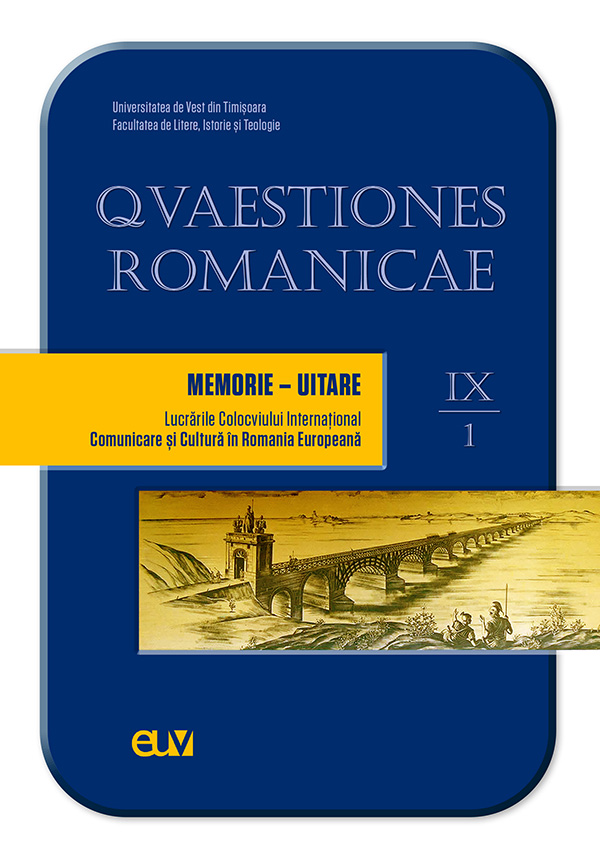Μίμησις et Ἀνάμνησις. Les théories d’Aristote et de Platon fondues dans la musique de Ravel et dans la danse de Béjart
Abstract: (The theories of Aristotle and Plato fused in the music of Ravel and the dance of Béjart) Starting from Ravel’s “Bolero”, choreographically transposed by Maurice Béjart and integrated in the movie “Les Uns et les Autres” (directed by Claude Lelouch), I intend to reveal how the Plato's doctrine of anamnesis and the Aristotle’s theory of mimesis transcend the philosophical language and rebuild the concepts of space and time in relation to the human being, through music, dance, or scenography. This analysis follows, essentially, the rhythm, melos and gesture variation superposed over an ascendent linear progression that evolves in syncretic harmony, in different languages. I also look on to the symbolic accumulation of certain fundamental concepts of Plato’s gnoseology and Aristotle’s poetics, transposed in the auditive and visual arts language. The memory and the remembrance of birth, love, and death as attributes of existence, the knowledge as a mythical memory of the primordial elements (water, earth, fire and air), the rhythm imitation of the world, day, night, breath and love, and the meaning of the three principles (the unity of action, place, and time) are the landmarks followed by this analysis, until the abrupt end of the score, choreography and movie scene.
Keywords: Bolero, Béjart (Maurice), Ravel (Maurice), Platonic theory of memory, Aristotelian poetics.
Résumé : Le texte suivant propose une traduction du langage des sons, des gestes, de la danse, dans celui des idées et des mots. L’analyse cherche à saisir comment le schéma platonicien de la réminiscence, tout aussi que la théorie aristotélicienne de la μίμησις trouvent leur expression auditive et visuelle dans le Boléro de Ravel, chorégraphié par Maurice Béjart. En rapport avec l’être humain, avec son corps, son âme, ses émotions et ses perceptions, les artistes réécrivent les concepts de la philosophie grecque : la mémoire de la naissance de l’être, l’amour et la mort en tant qu’attributs de l’existence, la connaissance de soi-même, comme réminiscence mythique et symbiose avec les éléments primordiaux de l’univers (l’eau, la terre, le feu et l’air), l’imitation du rythme du jour et de la nuit, de la respiration et de l’amour. Au-delà du tableau émouvant perçu par les sens, on retrouve un canevas des thèmes classiques : l’unité de temps, de lieu et d’action, l’imitation d’une action grave et compète, les personnages exemplaires, par l’intensité des passions qu’ils incarnent, dans un mot, l’humanité archétypale et la sphère des idées comprises dans une tragédie aristotélicienne.
Cuvinte-cheie: Bolero, Béjart (Maurice), Ravel (Maurice), teoria platoniciană a memoriei, poetica aristotelică.
